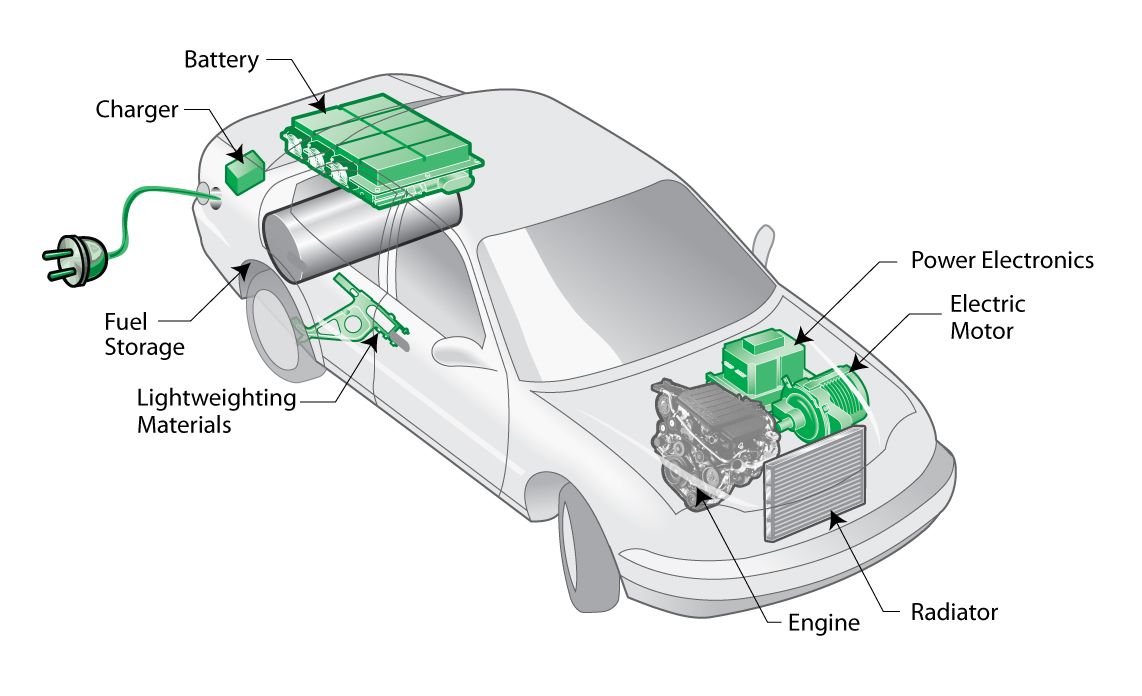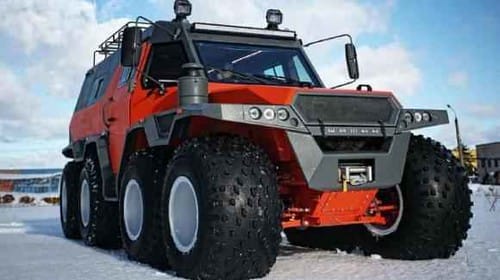
The decision to purchase a new or used SUV involves navigating a complex landscape of features, aesthetics, and perceived value. Many buyers find themselves drawn to the latest designs, impressive comfort, advanced fuel economy figures, or cutting-edge infotainment systems. However, a critical factor that is all too frequently overlooked in the excitement of a new acquisition is the vehicle’s long-term reliability. As Ruth Calkins, general manager and car expert at Findbyplate, aptly explained, “While some are known for their exceptional reliability, others are prone to frequent breakdowns and costly repairs. This is just one of the reasons buyers shouldn’t be easily swayed by the physical appearance or feature of an SUV when deciding to buy.”
The true cost of vehicle ownership extends far beyond the initial sticker price or monthly payments. Unexpected major repairs, especially those occurring once the factory warranty has expired, can quickly accumulate to thousands of dollars, turning an attractive purchase into a significant financial burden. This concern is particularly acute with SUVs, which are often relied upon for crucial family duties, daily commutes, and heavy hauling. A vehicle that spends more time in the repair shop than on the road, no matter how appealing its technology or looks, ultimately fails to deliver on its fundamental promise of reliable transportation.
Drawing on extensive analysis from auto industry experts and the collective experiences of long-term owners and mechanics, this article aims to shed light on specific SUV models that have consistently demonstrated a propensity for major mechanical and electrical failures before even reaching the 80,000-mile mark. Our focus is on empowering consumers with factual, data-driven insights, helping them make informed purchasing decisions that prioritize long-term dependability and minimize the risk of costly, inconvenient breakdowns. We delve into the common issues that plague these vehicles, providing a clear picture of what potential owners might face.
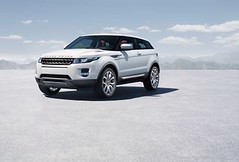
1. **Land Rover Range Rover**The Land Rover Range Rover commands a premium price tag, with Kelley Blue Book showing a starting MSRP of over $109,000 brand new. However, this luxury often comes with an unforeseen caveat: a rapid depreciation in value largely attributable to its problematic ownership experience. Melanie Musson, an auto industry expert with AutoInsurance.org, noted that “it costs a lot of money to buy new, but it loses value quickly because of how problematic ownership can become.” This observation highlights a significant concern for buyers who anticipate a blend of prestige and enduring performance.
One of the most frequently cited frustrations among Range Rover owners stems from its intricate infotainment system. Malfunctions are common, leading to unresponsive screens, connectivity issues, and general user dissatisfaction. Beyond entertainment, the vehicle is also prone to more serious electrical issues, which can manifest in various forms, from minor sensor glitches to more pervasive system failures. These electrical gremlins often require extensive diagnostic work, contributing to both owner frustration and increased repair costs.
Another significant vulnerability lies in the Range Rover’s sophisticated air suspension system. This feature, designed to provide a comfortable and adaptable ride, unfortunately, often succumbs to premature failure. Owners frequently report issues such as collapsed suspension, affecting ride quality and potentially compromising safety. Such repairs are typically complex and expensive, adding substantially to the vehicle’s long-term maintenance burden.
Perhaps most concerning are the potential engine problems that can afflict the Range Rover. These issues are not only costly but can also render the vehicle inoperable for extended periods. Musson added, “Engine problems can result in repairs that take weeks to restore the vehicle’s operational status.” This prolonged downtime underscores the severity of these mechanical faults, making the Range Rover a potentially unreliable choice for those who depend on their vehicle for consistent daily use.
Car Model Information: 2024 Ford F-150 XLT
Caption: 2022 Range Rover SE P440e (L460, fifth generation, United Kingdom)
Aka: unbulleted list
Name: Range Rover
Manufacturer: unbulleted list
Production: 1969–present
Assembly: unbulleted list
Class: unbulleted list
Layout: Front-engine, four-wheel-drive layout
Sp: uk
Categories: 1980s cars, 1990s cars, 2000s cars, 2010s cars, 2020s cars
Summary: The Land Rover Range Rover, generally shortened to Range Rover, is a 4WD luxury mid to full size crossover marque and sub-brand of Jaguar Land Rover, owned by India-based Tata Motors. The Range Rover line was launched in 1970 by British Leyland and since 2022 is in its fifth generation.
Additional models have been launched under the Range Rover name, including the Range Rover Sport, Range Rover Evoque, and Range Rover Velar.
Get more information about: Range Rover
Buying a high-performing used car >>>
Brand: Land Rover Model: Range Rover
Price: $41,604 Mileage: 9,645 mi.
Read more about: From Co-Stars to Soulmates: The Most Epic On-Set Romances That Lit Up Hollywood

2. **Volkswagen Taos**The Volkswagen Taos, a relatively newer entry in the SUV market, has quickly gained notoriety for persistent engine issues that are both frequent and expensive to rectify. According to Edmunds reviewers, owners have reported a consistent pattern of maintenance problems, leading to unexpected and significant repair bills early in the vehicle’s ownership cycle. This contradicts the expectation of reliability from a modern compact SUV, especially within the crucial initial years of use.
Beyond the engine, the Taos also suffers from unreliable electronics, a common complaint among owners. These electronic failures can range from minor annoyances to critical system malfunctions, contributing to a sense of unpredictability and eroding driver confidence. The vehicle’s sophisticated systems, intended to enhance the driving experience, instead become sources of recurring headaches and costly dealership visits.
A particularly alarming issue involves the fuel system, as highlighted by Melanie Musson. She wrote, “Fuel system problems can cause drivers to run out of gas because the gauges malfunction, preventing them from accurately indicating the fuel level.” This kind of fundamental failure is not merely inconvenient but poses a direct safety risk, leaving drivers potentially stranded due to inaccurate readings. Such a design flaw casts a significant shadow on the vehicle’s overall dependability.
Furthermore, the braking system in the Volkswagen Taos has shown a tendency for premature wear. Musson also observed that “The brakes often wear out quickly.” This necessitates more frequent brake service than average, which, over time, translates into additional and often unexpected costs for the owner. The combination of engine, electronic, fuel system, and brake issues makes the Taos a vehicle that demands a higher level of maintenance and financial outlay than many of its competitors, undermining its appeal as an economical choice.
Car Model Information: 2023 Volkswagen Taos 1.5T S
Name: Volkswagen Taos/Tharu
Manufacturer: Volkswagen
Aka: Volkswagen Tharu
Production: ubl
Assembly: ubl
Designer: Klaus Zyciora
Class: Compact crossover SUV
BodyStyle: SUV
Layout: Front-engine, front-wheel-drive,Front-engine, all-wheel-drive
Platform: Volkswagen Group MQB A1
Related: SEAT Ateca,Škoda Karoq,Jetta VS5
Engine: Petrol engine,Turbocharger,1.4 L TSI 150 I4,1.5 L TSI 160 I4,Multi-point fuel injection,2.0 L TSI 190 I4
Transmission: Manual transmission
Battery: 44.1 kWh (e-Tharu)
ElectricRange: convert
Wheelbase: 105.9 in
Abbr: on
Order: 4453 mm
Length: 175.8 in
Width: 1841 mm
Height: convert
ModelYears: 2022–present
Categories: All-wheel-drive vehicles, Articles with short description, CS1 Brazilian Portuguese-language sources (pt-br), CS1 Mexican Spanish-language sources (es-mx), CS1 Portuguese-language sources (pt)
Summary: The Volkswagen Taos is a compact crossover SUV marketed by Volkswagen. It was first released in October 2018 as the Volkswagen Tharu in China, while the Taos was released in October 2020 as a restyled version of the Tharu for the North American, South American, and Russian markets. In the brand’s lineup, the vehicle is positioned below the Tiguan, and in South America and China above the T-Cross. It is not marketed in core European market.
The Taos is named after Taos, New Mexico. The Tharu name is derived after the eponymous Tharu people, an ethnic group indigenous to Nepal and Northern India.
Get more information about: Volkswagen Taos
Buying a high-performing used car >>>
Brand: Volkswagen Model: Taos
Price: $20,475 Mileage: 18,047 mi.
Read more about: Buyer Beware: 8 SUVs That Are Known to Fail Frequently Before 100,000 Miles
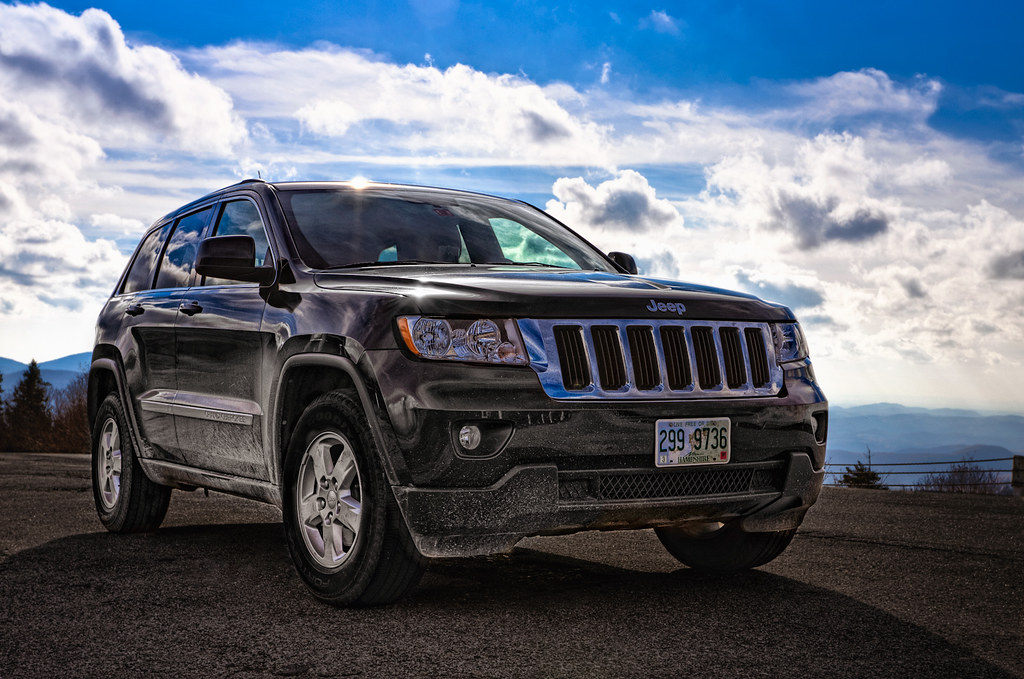
3. **Jeep Grand Cherokee**The Jeep Grand Cherokee is widely celebrated for its robust off-roading capabilities and distinctive, rugged styling, making it a popular choice for adventure seekers. However, beneath this adventurous exterior lies a concerning record for overall reliability. Melanie Musson, an auto industry expert, plainly stated, “Jeep, as a whole, has a reputation for breaking down.” This reputation extends notably to the Grand Cherokee, with recurring issues that significantly impact owner satisfaction and incur substantial repair costs.
A particularly persistent problem across various model years of the Grand Cherokee involves widespread transmission failures. Specifically, the 8-speed automatic transmission, introduced in later iterations, has been a source of numerous complaints, with owners reporting harsh shifts, unexpected slipping, or even complete transmission failures at relatively low mileages. These issues are not merely minor inconveniences; they often necessitate complete transmission replacement, an extremely expensive repair that can run into several thousands of dollars, pushing the total cost of ownership considerably higher.
Beyond transmission woes, the Grand Cherokee also struggles with engine issues. Owners frequently report problems such as cylinder misfires, persistent oil leaks, and overheating. These engine-related faults tend to become more prevalent in higher-mileage units but are not uncommon even in younger models. Such problems can lead to significant mechanical work, prolonged vehicle downtime, and a sense of growing unreliability that undermines the vehicle’s perceived durability.
Electrical problems form another critical area of concern for Grand Cherokee owners. Faulty wiring harnesses, glitchy infotainment systems, and random sensor failures are commonly reported. These electrical gremlins often lead to persistent warning lights on the dashboard, requiring multiple and often inconclusive visits to the dealership. The air suspension system, a premium feature available on higher trims, also frequently proves to be a major point of failure. Many owners have reported experiencing collapsed suspension systems around the 70,000-mile mark, with repair costs easily exceeding $1,000 per corner.
Adding to these long-standing issues, the 2024 Jeep Grand Cherokee has faced an alarming 11 recalls from the NHTSA. Ruth Calkins highlighted that these recalls encompass “various safety concerns including issues with airbags, electrical systems, suspension and steering.” She further noted, “This recall points to potential gaps in the design or manufacturing of this vehicle, that may compromise its reliability as well as safety.” This high number of recalls for a current model year raises serious questions about fundamental design and manufacturing quality, indicating a potential long-term pattern of unreliability even in newer vehicles.
The cumulative effect of these pervasive mechanical and electrical problems makes the Grand Cherokee a potentially frustrating and expensive ownership experience. Despite its initial appeal for ruggedness, its long-term consistency often falls short of expectations. The high cost of replacement parts, the inherent complexity of its systems, and a documented history of mechanical unpredictability combine to position the Jeep Grand Cherokee as one of the more high-maintenance midsize SUVs, causing significant financial strain and eroding owner confidence.
Car Model Information: 2018 Nissan Rogue SV
Name: Jeep Grand Cherokee
Manufacturer: Jeep
Production: 1992–present
ModelYears: 1993–present
Class: unbulleted list
BodyStyle: sport utility vehicle
Layout: unbulleted list
Chassis: Vehicle_frame#Uniframe
Categories: 2000s cars, 2010s cars, 2020s cars, All-wheel-drive vehicles, All Wikipedia articles written in American English
Summary: The Jeep Grand Cherokee is a range of mid-sized sport utility vehicles produced by American manufacturer Jeep. At its introduction, while most SUVs were still manufactured with body-on-frame construction, the Grand Cherokee has used a unibody chassis from the start.
Get more information about: Jeep Grand Cherokee
Buying a high-performing used car >>>
Brand: Jeep Model: Grand Cherokee
Price: $11,369 Mileage: 110,399 mi.
Read more about: Buyer Beware: 8 SUVs That Are Known to Fail Frequently Before 100,000 Miles
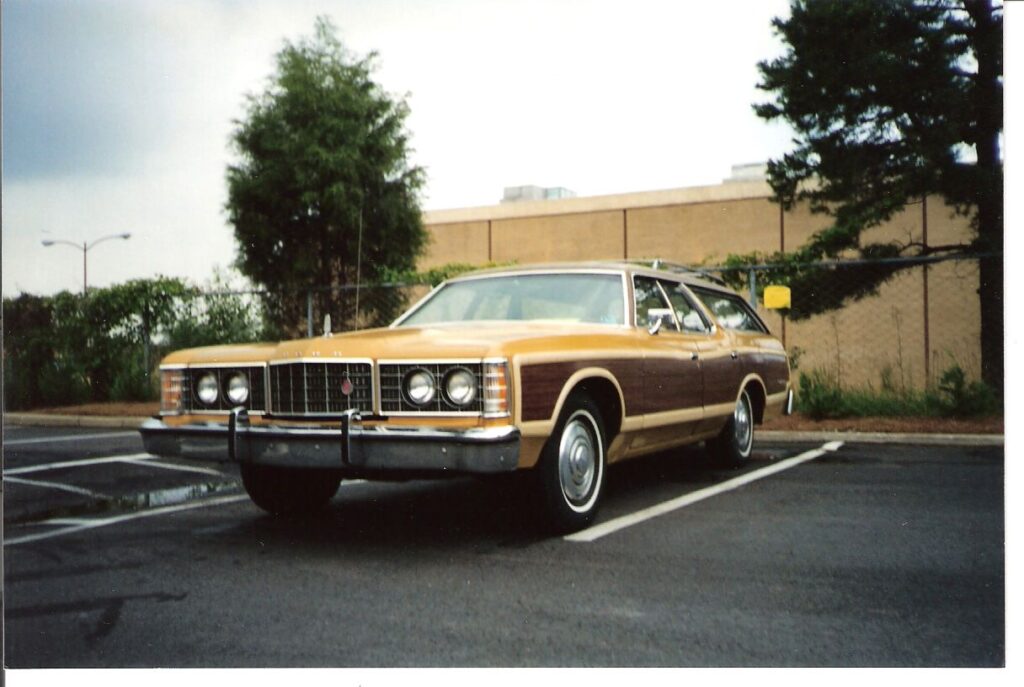
4. **Ford Edge**The Ford Edge presents itself as an appealing midsize SUV with a comfortable interior and a smooth ride, particularly when new. However, its long-term reliability record reveals a different story, with the model frequently plagued by several recurring mechanical problems that can lead to substantial repair costs for owners. These issues often surface after the initial warranty period, leaving owners to bear the brunt of expensive fixes.
One of the most concerning and widely reported issues with the Ford Edge involves its engine, especially the turbocharged EcoBoost variants. These engines have a notorious tendency to suffer from coolant intrusion into the cylinders, a severe defect that can ultimately lead to complete engine failure. Many unfortunate owners have reported needing full engine replacements well before their vehicles even reached 80,000 miles, a truly alarming prospect for any car buyer. Ford has acknowledged this problem through technical service bulletins, but out-of-warranty vehicles often face enormous, unexpected repair bills.
Transmission reliability also stands out as a significant weak point for the Ford Edge. Both the six-speed and eight-speed automatic transmissions used in various model years have been the subject of numerous complaints. Owners frequently describe experiencing symptoms such as jerking, slipping gears, or outright transmission failure. These critical issues typically begin to manifest just after the factory warranty period expires, adding considerable financial insult to the injury of a major mechanical breakdown.
Electrical glitches contribute further to the Edge’s reliability woes. A wide array of electronic malfunctions has been reported, including problems with the power liftgate, backup camera, climate control systems, and various dashboard warning systems. These issues are not mere annoyances; depending on their nature, they can compromise the vehicle’s safety or render certain features completely unusable. Such persistent electrical problems often lead to frustrating and repeated visits to service centers, with repair delays sometimes compounded by inconsistent parts availability.
Moreover, the suspension and steering components in the Ford Edge often exhibit premature wear compared to the average vehicle in its class. Issues with the steering rack, tie rods, and sway bars are commonly reported to surface well before the 100,000-mile mark. These component failures directly impact the vehicle’s handling characteristics and ride comfort, necessitating costly repairs to restore proper functionality and safety. The cumulative effect of these drivetrain, electrical, and suspension vulnerabilities makes the Ford Edge a high-risk purchase for consumers seeking a durable, long-term vehicle.
Despite efforts in newer models to address these identified weak points, many of the same reliability challenges have unfortunately persisted across multiple model years. For buyers who prioritize long-term dependability and aim to minimize unforeseen expenses, the Ford Edge often proves to be an unsuitable choice. Its consistent struggle in long-term reliability studies and its frequent appearances in repair shops indicate that while it may offer initial comfort and features, the significant risk of major repairs makes it a gamble many informed buyers would prefer to avoid.
Car Model Information: 2024 Ford Edge SEL
Name: Ford Edge
Caption: 2019 Ford Edge SEL EcoBoost AWD (US)
Manufacturer: Ford Motor Company
Production: 2006–present
ModelYears: 2007–2024 (CAN/US),2016–2021 (Europe),2015–2019 (UK)
Class: Mid-size crossover SUV
BodyStyle: SUV
Layout: Front-engine, front-wheel-drive layout
Categories: 2010s cars, 2020s cars, All-wheel-drive vehicles, All articles with unsourced statements, Articles with short description
Summary: The Ford Edge is a crossover SUV manufactured and marketed by the Ford Motor Company introduced for the 2007 model year as the first mid-size CUV marketed by Ford in North America. Deriving its name from a trim package of the Ford Ranger, the Ford Edge is positioned between the Ford Escape and the Ford Explorer within the Ford product line.
Production of the North American Edge ended in April 2024, with the third generation Edge (dubbed the Edge L), launched in 2023, being produced and sold exclusively in China.
Sharing its underpinnings with the Ford Fusion sedan, Ford also marketed a rebadged variant as the Lincoln MKX (since 2019, the Lincoln Nautilus). The second generation is also marketed by Ford of Europe, positioned between the Kuga (Escape) and the Explorer PHEV.
Manufacturing of the first two generations took place at Oakville Assembly (Oakville, Ontario) alongside the Nautilus.
Get more information about: Ford Edge
Buying a high-performing used car >>>
Brand: Ford Model: Edge
Price: $22,993 Mileage: 38,664 mi.
Read more about: 7 Iconic ’60s Classics: Unpacking the Million-Dollar Appeal of Automotive Legends
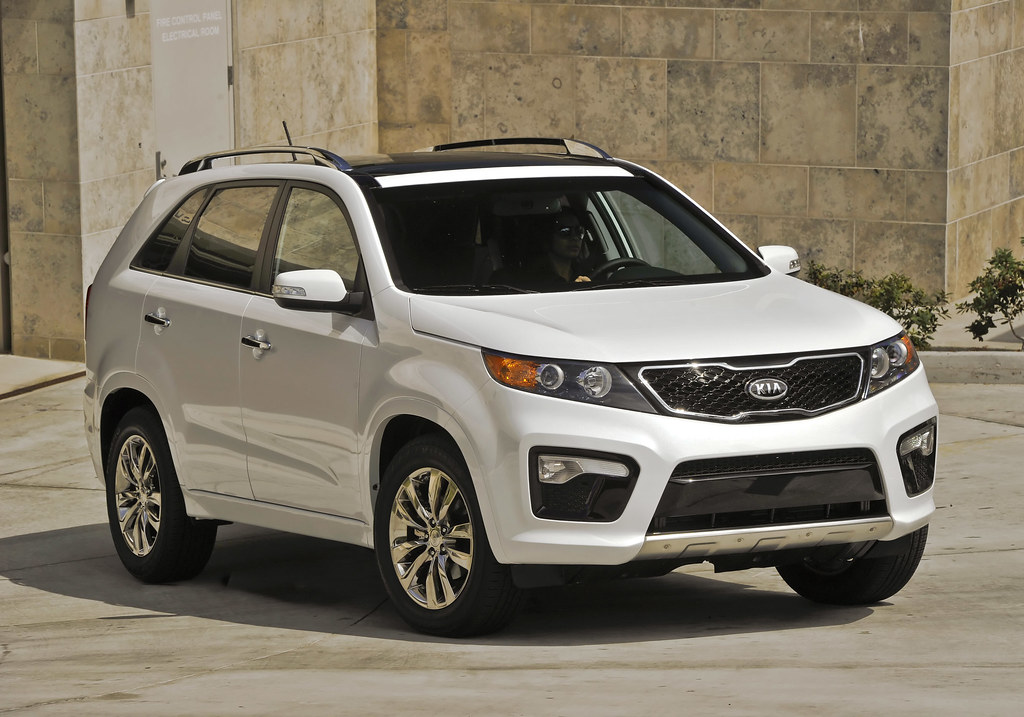
5. **Kia Sorento**The Kia Sorento often catches the eye with its stylish design and an impressive array of features, presenting itself as a compelling choice in the midsize SUV market. However, a deeper look into its long-term performance reveals a concerning history of serious mechanical problems that can translate into significant and unexpected repair bills for owners. This track record, particularly impacting specific model years, unfortunately casts a shadow over its perceived value.
One of the most critical and widely reported issues plaguing the Sorento involves persistent engine failures, predominantly in models produced between 2011 and 2019, which utilized the 2.4L and 3.3L engines. Owners have frequently reported instances of sudden engine seizures, often linked to internal issues such as oil starvation or rod bearing failure, with some breakdowns occurring without warning during operation. These severe engine defects became so prevalent that they led to multiple class-action lawsuits and necessitated extensive recalls. Even after recall-related fixes, many Sorento owners regrettably found themselves facing similar engine problems, often requiring a complete engine replacement, a repair that can cost several thousands of dollars if outside warranty coverage.
Adding to the Sorento’s reliability challenges are documented transmission problems across various model years. Both the six-speed and eight-speed automatic transmissions have been cited for symptoms like hard shifting, noticeable gear slipping, or even premature failure. These significant transmission issues commonly surface between 60,000 and 90,000 miles, a period when many vehicles typically require minimal major repairs. The financial impact of such failures can be substantial, especially for owners who did not invest in extended warranties. Even newer models featuring dual-clutch transmissions have prompted concerns regarding jerky operation and early wear, suggesting a potential continuation of powertrain reliability issues.
Beyond the major drivetrain components, the Sorento’s electronic systems have also demonstrated vulnerabilities. Common complaints include infotainment glitches, failures of the backup camera, power window malfunctions, and issues with driver assistance features. Climate control systems have occasionally failed, necessitating costly component replacements. These recurring electrical gremlins often require owners to make multiple, frustrating trips to service centers, and the unpredictability of these failures can significantly erode confidence in the vehicle’s long-term dependability for daily use.
Despite Kia’s ongoing efforts to enhance quality in more recent model years, the established reputation of the Sorento for these pervasive mechanical and electrical problems makes it a high-risk proposition for long-term ownership. While newer versions may indeed offer an attractive package on the surface, the inherent risks of major, expensive breakdowns remain a significant concern. Prospective buyers, especially those considering a used Sorento with higher mileage, are strongly advised to exercise caution and thoroughly investigate the vehicle’s maintenance history to avoid potentially turning an initial saving into a costly and frustrating ownership experience.
Car Model Information: 2024 Kia Sorento S
Manufacturer: Kia
Production: 2002–present
ModelYears: 2002–present
Class: Compact SUV,Mid-size crossover SUV
BodyStyle: SUV
Layout: Front-engine, rear-wheel-drive,Front-engine, front-wheel-drive,Front-engine, all-wheel-drive
Chassis: ubl
Categories: 2010s cars, ANCAP large off-road, All-wheel-drive vehicles, All Wikipedia articles written in British English, All articles needing additional references
Summary: The Kia Sorento is a series of two-wheel drive and four-wheel drive family SUVs manufactured by the South Korean manufacturer Kia since 2002 through four generations. Initially a compact SUV built on a body-on-frame chassis, the second-generation Sorento transitioned to a larger car-based platform which placed it into the mid-size crossover SUV class, and has been developed alongside the Hyundai Santa Fe.
Get more information about: Kia Sorento
Buying a high-performing used car >>>
Brand: Kia Model: Sorento
Price: $28,585 Mileage: 34,953 mi.
Read more about: Navigating the SUV Market: 14 Models U.S. Consumers Should Approach with Caution in 2024-2025
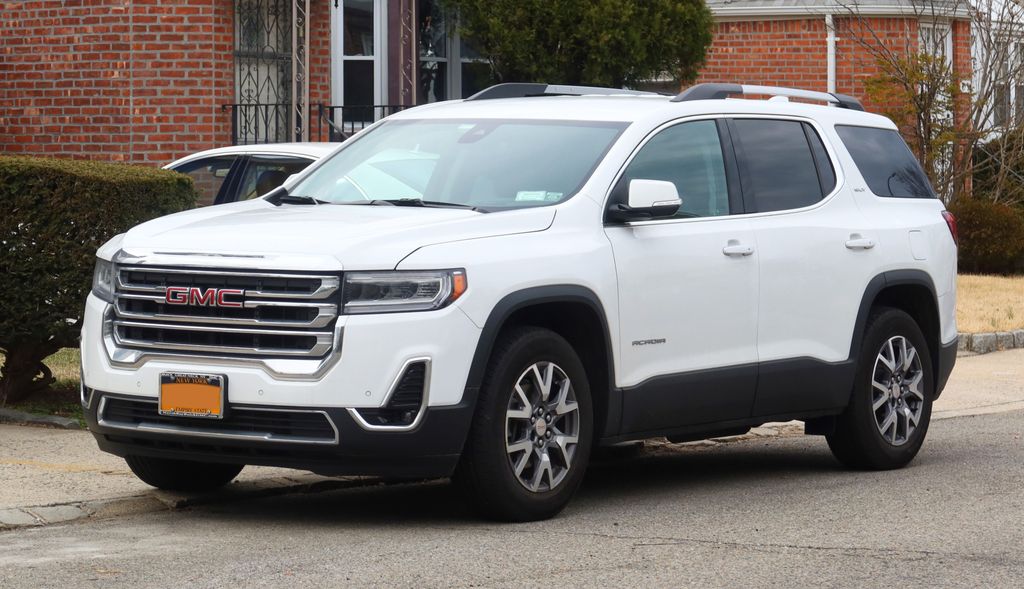
6. **GMC Acadia**The GMC Acadia is frequently presented as a premium midsize SUV, promising ample space, advanced technology, and robust performance to families and individuals alike. However, an examination of its long-term reliability consistently places it towards the lower end of the spectrum within its class, revealing a pattern of significant and often expensive mechanical and electrical failures that prospective buyers should be acutely aware of.
One of the most frequently cited and notorious problems associated with the GMC Acadia, particularly affecting models produced between 2007 and 2016, centers around pervasive transmission failures. Numerous owners have reported experiencing complete transmission failure at surprisingly low mileages, sometimes well before the 80,000-mile mark. These failures often occurred suddenly, necessitating complete replacement or extensive rebuilding of the transmission, an extremely costly repair. Even with newer Acadias that utilize different platforms and revised powertrains, issues such as jerky shifting and delayed engagement have regrettably persisted in some recent models, indicating ongoing challenges with transmission refinement and durability.
Another persistent and concerning mechanical flaw involves the Acadia’s timing chain, a problem particularly prevalent in its V6 engines. Timing chain stretch and eventual failure are well-documented issues that can trigger a persistent check engine light, lead to rough engine running, or in severe cases, result in complete engine shutdown. Replacing a timing chain is an exceptionally labor-intensive and costly repair, often ranging upwards of $1,500 to $2,000. Furthermore, if the timing chain fails catastrophically while the vehicle is in motion, it can cause severe internal engine damage, potentially requiring a full engine replacement. This type of major repair is not only a significant financial burden but also causes immense inconvenience for families who depend on their SUV for crucial daily transportation, often with subtle or late warning signs.
Beyond the major powertrain components, electrical and electronic reliability significantly detract from the Acadia’s overall standing. Owners commonly report a myriad of problems, including malfunctioning sensors, erratic dashboard displays, issues with power door locks, and even intermittent failures of the electronic ignition system. Random warning lights appearing without a clear cause, malfunctioning airbags, and various electrical shorts have been noted across different model years.
These electrical gremlins often prove challenging to diagnose, requiring extensive and costly diagnostic work to pinpoint the root cause. Even after expensive repairs have been performed, owners frequently experience the same problems resurfacing months later, creating a deeply frustrating ownership experience. This unpredictable nature of electrical failures wears down owner trust and contributes substantially to the total cost of ownership, making the Acadia a less-than-ideal choice for those seeking consistent, trouble-free operation.
While the GMC Acadia may offer appealing passenger space and a comfortable ride when it is functioning as intended, the inherent risk of encountering major repairs is simply too high for many discerning buyers. Its consistent propensity for both significant engine (timing chain) and transmission work, compounded by pervasive electrical problems, firmly positions it as one of the less reliable options available in the midsize SUV segment. For consumers who prioritize peace of mind, long-term dependability, and wish to avoid the specter of costly breakdowns, the Acadia unfortunately falls short, often becoming a financial and logistical burden as it ages, especially under demanding usage conditions like towing or frequent long-distance travel.
Car Model Information: 2019 GMC Acadia SLT-2
Name: GMC Acadia
Manufacturer: General Motors
Aka: Holden Acadia (2018–2020)
Production: 2006–present
ModelYears: 2007–present
Class: Full-size crossover SUV
BodyStyle: sport utility vehicle
Layout: ubl
Predecessor: GMC Envoy XL,GMC Safari,Isuzu Ascender
Caption: Second generation GMC Acadia (facelift)
Categories: 2010s cars, All-wheel-drive vehicles, All Wikipedia articles written in American English, All articles with bare URLs for citations, All articles with unsourced statements
Summary: The GMC Acadia is a crossover SUV manufactured by General Motors for its GMC division. The first-generation GMC Acadia shared the GM Lambda platform with the Saturn Outlook, the Chevrolet Traverse, and the Buick Enclave. The Acadia went on sale in 2006 as a 2007 model in the United States, Canada and Mexico. The Acadia replaces three of the 7- or 8-seater vehicles on the Buick-Pontiac–GMC dealership network, the midsize GMC Safari van, the GMC Envoy, and the Pontiac Montana SV6 minivan for the domestic market. As of 2009, the Lambda vehicles had replaced the Buick Rainier, Buick Rendezvous, Buick Terraza, and the GMC Envoy XL and then subsequently the GMC Envoy, Chevrolet TrailBlazer and the Isuzu Ascender. A Denali version of the Acadia debuted for 2011. In 2017, the second generation Acadia was repositioned as a mid-size crossover utility vehicle in order to compete in the growing midsize SUV market against the likes of the Ford Explorer, Edge, and the Jeep Grand Cherokee.
Get more information about: GMC Acadia
Buying a high-performing used car >>>
Brand: GMC Model: Acadia
Price: $20,488 Mileage: 88,772 mi.
Read more about: Navigating the SUV Market: 14 Models U.S. Consumers Should Approach with Caution in 2024-2025
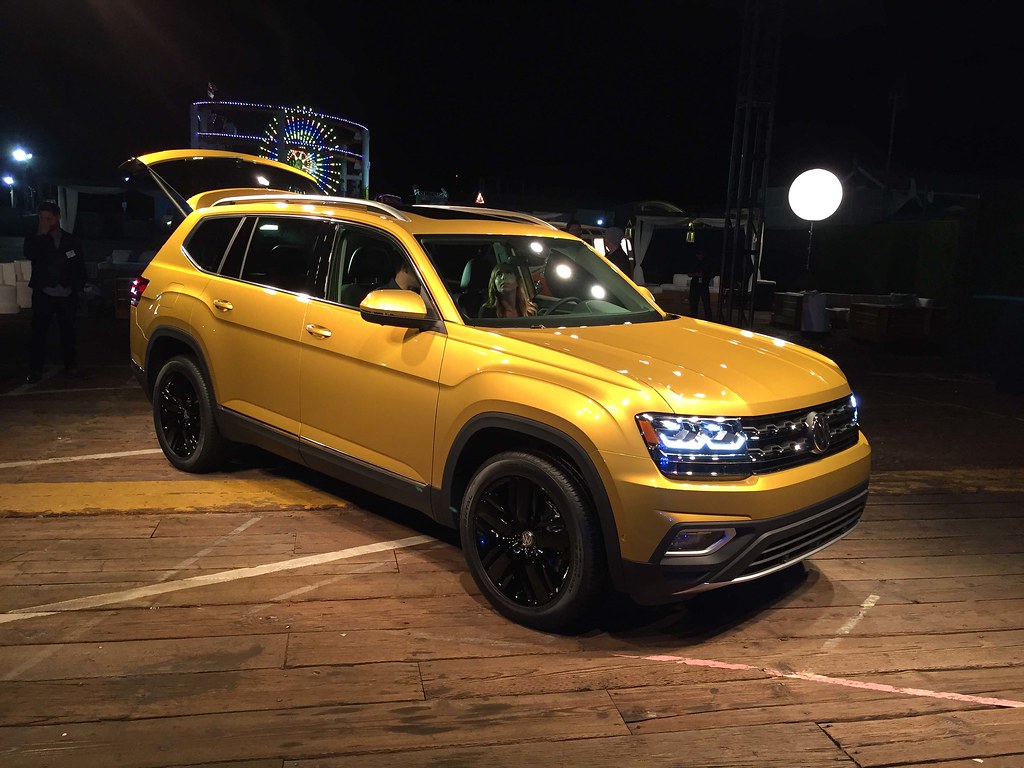
7. **Volkswagen Atlas**The Volkswagen Atlas, a relatively recent entrant into the competitive midsize SUV category, initially garnered positive attention for its remarkably roomy interior and distinctive, bold styling. However, as these vehicles have accumulated mileage and aged, their long-term reliability has regrettably failed to meet the expectations set by their initial appeal. A closer look reveals several significant issues that challenge the Atlas’s dependability, making it a potentially risky investment for long-term owners.
One of the most significant concerns frequently reported by Atlas owners centers on persistent engine issues, affecting both the 3.6L VR6 and the 2.0L turbocharged variants. These engines have demonstrated a propensity for various problems, including oil leaks, carbon buildup on intake valves, and premature sensor failures. Some Atlas owners have experienced alarming symptoms such as sudden loss of power while driving, noticeable hesitation during acceleration, or even complete engine stalls at low speeds. Such issues raise serious questions about the fundamental dependability of these powertrains. Repairs for these engine problems often involve extensive labor, and due to the sometimes elusive nature of their diagnosis, vehicles can spend prolonged periods in service shops, causing considerable inconvenience.
Transmission problems have also emerged as a weak point in the Volkswagen Atlas. Owners have reported issues primarily related to hesitation during gear changes and inconsistent shifting patterns, leading to a less-than-smooth driving experience than initially promised. In more severe cases, complete transmission replacement has been necessary for vehicles well before they reached the 100,000-mile mark. While Volkswagen has attempted to address some of the shifting concerns through software updates, these digital fixes often fail to resolve the underlying mechanical vulnerabilities. Owners frequently express frustration over the high cost and sheer frequency of repair visits, a burden that becomes particularly pronounced once the factory warranty has expired.
Adding to the reliability challenges, the Atlas has exhibited weaknesses in its electronic systems and overall build quality. Owners have reported a spectrum of issues, including failing infotainment systems, malfunctioning backup cameras, faulty climate control sensors, and flickering instrument panels. While these problems might initially seem minor, they can quickly escalate into complex and expensive repairs. Some owners have even experienced recurring problems after having specific systems replaced multiple times, highlighting a systemic inconsistency in component durability. This level of unpredictability erodes confidence in the vehicle and contributes to the perception that the Atlas may not be engineered for lasting performance.
What makes these issues particularly frustrating for owners is that many of these prevalent problems are often not covered by Volkswagen’s standard powertrain warranty, leaving owners to bear the full financial brunt. While the Atlas undeniably offers a capacious interior and a generally quiet ride, its mechanical and electrical reliability leaves much to be desired, especially when compared to its more robust competitors. It is a vehicle that might initially suit someone prioritizing short-term comfort and space, but long-term ownership carries a significant risk of escalating repair costs and frequent interruptions to vehicle availability.
Ultimately, for buyers who expect their SUV to run smoothly past 150,000 miles with minimal complaints, the Volkswagen Atlas often stands out for the wrong reasons. It represents a scenario where the features and initial appeal are present on paper, but the long-term execution of fundamental reliability falls short. This makes it a cautious choice for consumers prioritizing enduring dependability and predictable maintenance costs over its newer design and ample interior dimensions.
Choosing the right SUV is a decision fraught with trade-offs, but the importance of prioritizing long-term reliability cannot be overstated. As this in-depth analysis has revealed, not all vehicles, despite their initial allure or advanced features, are built to withstand the rigors of years on the road without accumulating substantial repair bills. The true cost of ownership extends far beyond the dealership lot, and unexpected breakdowns can quickly transform an exciting purchase into a significant financial and logistical burden.
Car Model Information: 2024 Volkswagen Atlas 2.0T SE w/Technology 4MOTION
Name: Volkswagen Atlas
Manufacturer: Volkswagen
Aka: Volkswagen Teramont
Production: 2017–present
ModelYears: 2018–present
Class: Mid-size crossover SUV
BodyStyle: SUV
Layout: unbulleted list
Predecessor: Volkswagen Touareg
Categories: 2020s cars, All-wheel-drive vehicles, Articles with short description, CS1 German-language sources (de), CS1 Mexican Spanish-language sources (es-mx)
Summary: The Volkswagen Atlas is a mid-size crossover SUV manufactured by the German automaker Volkswagen since 2017. Developed mainly for the North American and Chinese market, the vehicle is based on the Volkswagen Group MQB platform. Outside the US, Canadian, and Chilean markets, the vehicle is marketed as the Volkswagen Teramont. It is positioned above the long-wheelbase Tiguan and below the smaller but more upmarket Touareg.
Get more information about: Volkswagen Atlas
Buying a high-performing used car >>>
Brand: Volkswagen Model: Atlas
Price: $34,990 Mileage: 12,411 mi.
Read more about: Navigating the SUV Market: 14 Models U.S. Consumers Should Approach with Caution in 2024-2025
By understanding the documented weaknesses and recurring issues that plague certain models, consumers can make more empowered and informed decisions. While the market offers a diverse range of SUVs known for their exceptional durability and minimal maintenance needs, it is equally crucial to identify those models that consistently fall short of dependability expectations before reaching critical mileage milestones. Armed with this knowledge, buyers can navigate the complex automotive landscape with greater confidence, ultimately securing a vehicle that provides reliable transportation and peace of mind for years to come, rather than becoming a frequent visitor to the repair shop.



